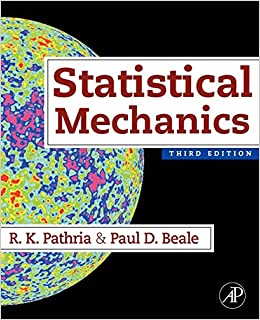In view of the fact that only those fluctuations whose length scale is large play a dominant
Question:
In view of the fact that only those fluctuations whose length scale is large play a dominant role in determining the nature of a phase transition, the quantity \(\left(\lambda-\mu_{\mathbf{k}}\right)\) in the expression for the correlation function of the spherical model, see equation (13.5.57), may be replaced by
\[
\lambda-\mu_{\mathbf{k}}=\lambda-J \sum_{j=1}^{d} \cos \left(k_{j} a\right) \simeq J\left[\phi+\frac{k^{2} a^{2}}{2}\right]
\]
where \(\phi=(\lambda / J)-d\). Show that this approximation leads to the same result for \(G(\boldsymbol{R})\) as we have in equation (13.5.61), with the same \(\xi\) as in equation (13.5.62).
For a similar reason, the quantity \([\exp (\alpha+\beta \varepsilon)-1]\) in the correlation function (13.6.33) of the ideal Bose gas may be replaced by
\[
e^{\alpha+\beta \varepsilon}-1 \simeq \alpha+\beta \varepsilon=\alpha+\left(\beta \hbar^{2} / 2 m\right) k^{2}
\]
leading to the same \(G(\boldsymbol{R})\) as in equation (13.6.35), with the same \(\xi\) as in equation (13.6.36). \({ }^{10}\)
Step by Step Answer:






